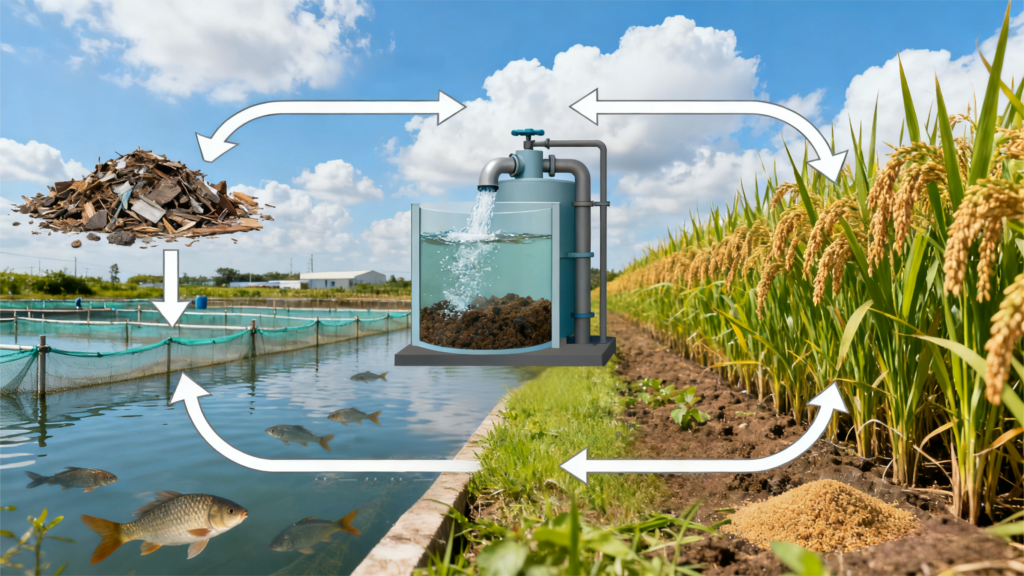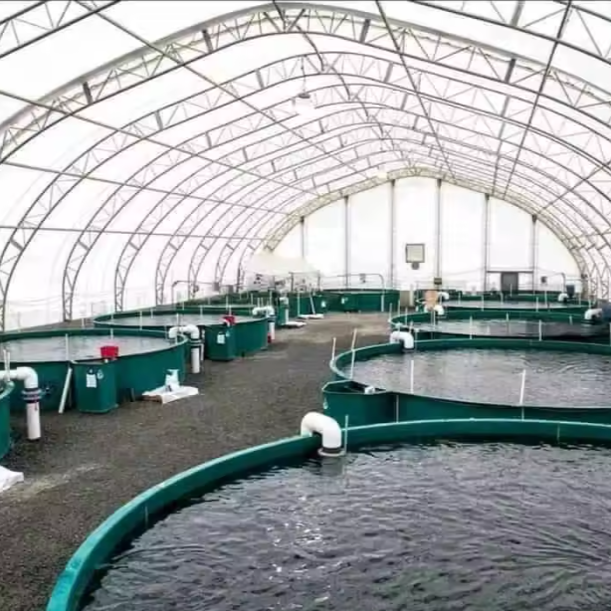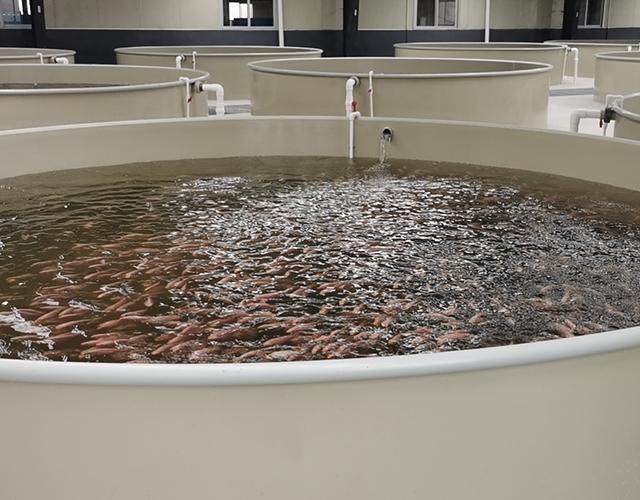Votre exploitation aquacole est-elle confrontée à des défis tels que des conditions météorologiques imprévisibles, une pénurie d'eau ou des pressions environnementales ? Vous n'êtes pas seul. Le secteur est à un tournant et Systèmes d'aquaculture en circuit fermé (RAS) apparaissent comme une solution puissante, durable et rentable.

Mais qu'est-ce qui fait des RAS l'avenir ? Nous répondons aux 5 questions les plus critiques pour vous montrer pourquoi.
1. Comment les RAS peuvent-ils économiser plus de 95% d'eau ?
La question : L'eau douce est une ressource précieuse. Les systèmes traditionnels à écoulement continu en consomment d'énormes quantités, ce qui les rend inadaptés à de nombreuses régions. Comment la pisciculture à haute densité peut-elle être respectueuse de l'eau ?
La réponse : RAS le réutilise.
Imaginez un aquarium sophistiqué et autonettoyant à l'échelle commerciale. Dans un RAS, plus de 95% d'eau sont continuellement recyclés et traités dans le système. Voici comment :

Filtration mécanique : Élimine les déchets solides (excréments de poissons, aliments non consommés).
Filtration biologique : Les bactéries bénéfiques transforment l'ammoniac et les nitrites hautement toxiques présents dans l'eau en nitrates moins toxiques.
Oxygénation et dégazage : Réapprovisionne en oxygène dissous tout en éliminant les gaz nocifs tels que le dioxyde de carbone.
Stérilisation par UV : Élimine les bactéries pathogènes présentes dans l'eau, garantissant ainsi un environnement aquatique sain.
En bref : Les RAS vous permettent d'établir une ferme productive à grande échelle pratiquement n'importe où, y compris dans les villes de l'intérieur ou les régions arides, en n'ajoutant qu'un minimum d'eau pour compenser l'évaporation et les pertes par éclaboussures. C'est la solution ultime pour la sécurité de l'eau.
2. Comment les RAS permettent-ils d'obtenir des rejets polluants "proches de zéro" ?
La question : Les enclos traditionnels à filet ouvert et les élevages en étang peuvent rejeter des déchets concentrés dans l'environnement. Comment le système RAS répond-il à cette préoccupation environnementale essentielle ?
La réponse : En contenant et en concentrant les déchets.

Dans un RAS, les déchets ne disparaissent pas simplement ; ils sont capturé et contrôlé.
Les déchets solides éliminés par les filtres mécaniques constituent une ressource riche en nutriments qui peut être collectée et réutilisée comme engrais de grande valeur pour l'agriculture.
Comme il n'y a pas d'écoulement continu d'eau polluée dans les écosystèmes locaux, les RAS éliminent efficacement l'une des plus grandes critiques de l'aquaculture conventionnelle.
En bref : Le RAS vous permet de pratiquer l'agriculture de manière responsable. C'est la clé pour Aquaculture durablevous aidant à respecter les réglementations environnementales strictes et à attirer les consommateurs soucieux de l'environnement.
3. Comment les RAS nous libèrent-ils de l'agriculture à la merci de la nature ?
La question : Les tempêtes, les ouragans, les proliférations d'algues nuisibles (marées rouges), les vagues de chaleur et les épisodes de pollution peuvent anéantir une récolte entière dans les systèmes d'eau libre. Comment le système RAS peut-il changer cela ?
La réponse : En amenant la ferme à l'intérieur.

Un RAS est un environnement terrestre entièrement contrôlé. Cela signifie que :
Plus de catastrophes météorologiques : Vos poissons sont protégés des intempéries.
Il n'y a plus de prolifération d'algues : Il n'y a pas d'échange avec des masses d'eau extérieures susceptibles d'introduire des agents pathogènes ou des toxines.
Sans prédateur : Les phoques, les oiseaux et les autres prédateurs ne sont plus une menace ni un casse-tête pour la gestion.
En bref : Les RAS transforment l'aquaculture d'un pari à haut risque avec la nature en une activité à part entière. un processus de fabrication prévisible et sûr. Vous avez le contrôle total, 365 jours par an.
4. Comment les RAS permettent-ils une production stable tout au long de l'année ?
La question : Les variations saisonnières de température ralentissent la croissance des poissons dans les systèmes extérieurs, ce qui entraîne une irrégularité des récoltes et de l'offre sur le marché. Comment le système RAS garantit-il l'uniformité ?
La réponse : En créant les conditions parfaites, chaque jour.
Un RAS vous permet d'ajuster chaque aspect de l'environnement aux niveaux optimaux pour vos espèces spécifiques :
Température optimale constante : L'eau chauffée ou refroidie assure une croissance maximale tout au long de l'année, quelle que soit la saison.
Qualité idéale de l'eau : L'oxygène, le pH et la salinité sont maintenus à des niveaux parfaits, ce qui réduit le stress et favorise la santé.
Une croissance constante et rapide : Cet environnement contrôlé permet une croissance plus rapide jusqu'à la taille du marché et des cycles de récolte plus prévisibles.
En bref : Avec RAS, vous pouvez planifier votre production et vos ventes en toute confiance. Il permet de mettre en place une chaîne d'approvisionnement fiable que les acheteurs et les supermarchés exigent, ce qui permet d'obtenir de meilleurs contrats et une plus grande rentabilité.
En adoptant le système RAS, vous n'investissez pas seulement dans une ferme piscicole, mais aussi dans un système de gestion de l'environnement. une entreprise de production alimentaire résiliente, efficace et responsable prêts à répondre aux exigences du 21e siècle.

Prêt à prendre en main votre avenir aquacole ?
Le potentiel de la RAS est illimité. Que vous planifiez un nouveau projet ou que vous cherchiez à transformer vos opérations existantes, notre équipe d'experts en RAS est là pour vous aider à chaque étape.
Contactez-nous dès aujourd'hui pour une consultation gratuite!www.staraq.com

